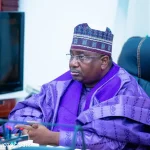The journey of the BRIC started when economist Jim O’Neil coined “BRIC” in 2001 to recognise the fast-growing economies at the time and their potential to be a global power by 2050. These countries were Brazil, Russia, India and China. A year later after the first BRIC summit in 2009, South Africa joined and it became known as “BRICS.”
The BRICS now comprises 10 countries (the aforementioned countries and Iran, Ethiopia, Egypt, U.A.E including Indonesia). About 44 nations are applying or making a move to join the bloc. The mutual trade among members has surpassed 1 trillion dollars.
For this year, leaders have gathered in Rio de Janeiro, Brazil for a summit which is aimed to strengthen trade and technology exchange within the bloc.
Nigerian Tribune reports that the president of Nigeria, Bola Ahmed Tinubu attended the 17th BRICS Summit upon the invitation from the Brazilian president Liz Ignacio Lula da Silva. The summit was held July 6 and 7.
Below are the things to know about the BRIC:
1. No headquarters or secretariat
Till today, the BRICS have no headquarters or secretariat to its name. There is no founding treaty, everything is done on paper and it has grown significantly into an economic and geopolitical power.
2. Over a third of the global economy
The bloc represents more than a third of the global economic growth based on purchasing power parity. Also they are more than 40% of the world’s population.
3. Chair position rotates a year
Every single year, the BRICS rotate the chair position among members. This allows member leaders to push for various initiatives or reforms with the world bank, IMF and United Nations Security Council.
4. Intra-BRICS trade
The intra-BRICS trade is an alternative payment system to the western-backed Society for Worldwide Interbank Financial Telecommunication (SWIFT) and it is done in local currencies.
5. The BRICS bank
Through its bank, the New Development Bank (NDB), the bloc has approved over 39 billion dollars for 120 projects that include clean energy, sustainable development and infrastructure.






